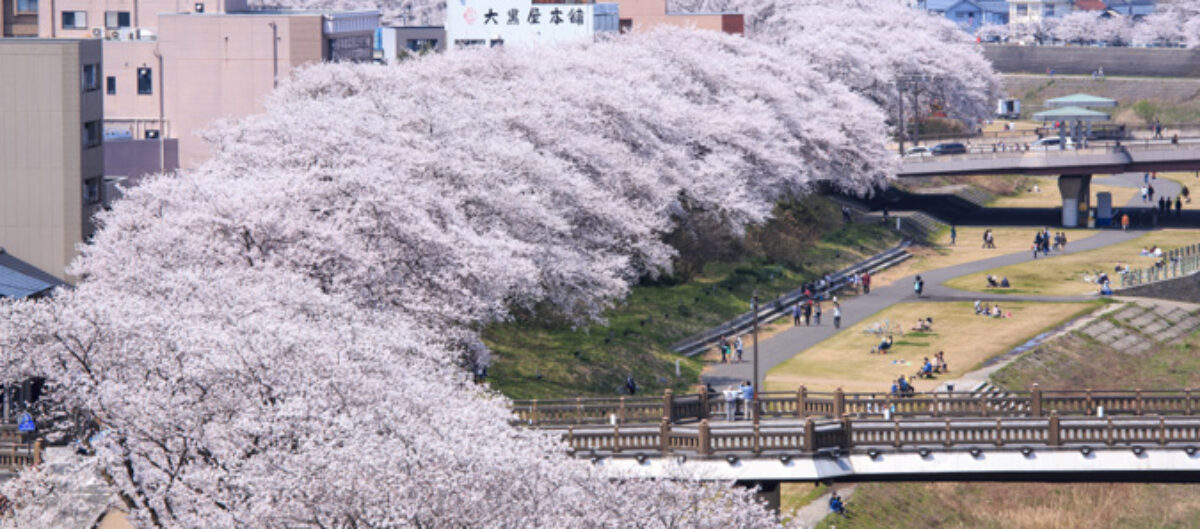





November/9/2019
Tsuruga Port, which faces the Sea of Japan, is located in the middle of Fukui Prefecture. It has a history stretching back 1,600 years and has functioned as a hub linking Japan and the Asian continent. In particular, from 1902 to 1941, Tsuruga Port was the key port on the shortest route between Japan and Europe. As a result, there was a lot of drama there. Polish orphans docked at the port, and Jewish refugees landed there. Because of these events, the port is called the Port of Humanity.

In 1919, on account of the war, a lot of Polish people, including starving children and orphans, were living in Siberia, Russia. Mrs. Anna Bielkiewicz, who felt very sorry for these orphans, organized a Polish Rescue Committee to send them back to Poland. She went to Tokyo and asked the Japanese Ministry of Foreign Affairs (MOFA) to help the Polish orphans. The Japanese Red Cross Society decided to rescue them soon after being contacted by MOFA.
Then in 1920 and in 1922, 763 Polish orphans from the ages of 1 to 16 landed at Tsuruga Port.
They stayed in Tsuruga for just a few hours or a day. People in Tsuruga gave them candies and toys, as well as providing rest facilities. A nine-year-old Polish child said that he’d eaten bananas and oranges, which he’d never seen before, and played with Japanese children.
Polish orphans went to Tokyo or Osaka after Tsuruga. Sadly, twenty-two of the children who went to Tokyo came down with typhoid fever. At that time, typhoid fever was a life-threatening infectious disease.
The nurses were very diligent in their care of the children. Among them, there was a young Red Cross nurse in her early 20s named Matsuzawa Fumi. She nursed the children very closely, even though there was a chance she’d get sick. In my opinion, she might’ve wanted to mother them. All the children recovered from the illness, but Matsuzawa was infected and died. When the children found out about the death of Matsuzawa, they sobbed.
When they left Japan, some of the children didn’t want to part from their nurses and cried. They would really miss them. They parted after singing the Polish and the Japanese national anthems.
All 763 children were able to return to Poland.


In 1939, Poland was under occupation. Also, the Nazis were persecuting the Jews. Jews in Poland fled to Lithuania. They wanted to go to other countries through Japan. This was the only way for them to survive, but they needed a transit visa to go to Japan. The Jewish refugees descended upon the Japanese Consulate in Kaunas, Lithuania, to get the visa. Sugihara Chiune, who worked at the Japanese Consulate, issued transit visas for them by disobeying orders from the Japanese government. Sugihara thought about the danger to his family from the Nazis and the risk to his career, but he issued the visas anyway. Without these visas, the Jews would almost certainly have been killed. (After that, Sugihara lost his job due to this episode.)
In 1940, about 4,000 – 6,000 Jewish refugees landed at Tsuruga. One of them said, “At the moment [When we were granted permission to land], Tsuruga looked like heaven.” (From the Chunichi Shimbun article, Fight to Freedom.) Another said, “There was no war, no discrimination. People were kind, and we were able to walk freely through the town. It was heaven.” (From the Fuji Television program, Tobirahirakishi-nochi.)
People in Tsuruga gave them fruits and opened up a public bathhouse to the refugees for free. Tsuruga is a port town, so the people there were accustomed to dealing with people from overseas.
I think that Matsuzawa is a heroine, and Sugihara is a hero. They sacrificed their lives to save other people. Later, Sugihara said, “I just did what we as human beings should do. One of my best teachers, in Harbin, once told me, “You do the right thing because it is the right thing. Not for gain. Not for recognition. Just because it is the right thing.” The refugees were people who needed my help. I could help them. It was the right thing to do. That’s all.”(source:The Fugu Plan)


In 2008, the Port of Humanity Tsuruga Museum was built near Tsuruga Port. In this museum, you can see pictures and information on panels about the Polish orphans and Jewish refugees written both in Japanese and English. (If you want to know more about these things, visit the official English website.)

In 2020, the Port of Humanity Tsuruga Museum was rebuilt.
Next, I’m going to write about Tsuruga Port in 2019.(The Tsuruga International Culture Festival 2019)
(References)
「The Fugu Plan」(Marvin Tokayer and Mary Swartz)(Gefen Books)
The official website of the Port of Humanity Tsuruga Museum
The Port of Humanity Tsuruga Museum Pamphlet
「みなと・つるが・いまむかし」(編:ガイドつるが観光ボランティア)(ガイドゆりかもめ)
「欧亜の架け橋ー敦賀ー」(編:涛声学舎)( 涛声学舎 )
「人道の港「敦賀港」」(井上脩)(日本海地誌調査研究会)
「人道の港 敦賀」(著者・編集:古江孝治)(日本海地誌調査研究会)
「ラジオ深夜便2009年9月号」(発行所:(財)NHKサービスセンター)
「命のビザ、遥かなる旅路」(北出明)(交通新聞社)
「港町から 第3号」(編集:「港町から」編集委員会)(街から舎)
「ポーランド孤児・「桜咲く国」がつないだ765人の命」(山田邦紀)(現代書館)
「日本のみなさん やさしさをありがとう」(文:手島悠介、絵:吉田純)(講談社)
「シベリアのポーランド孤児を看護中に殉職した松澤フミ看護婦と、その父、松澤房二郎」(野村憲一)「看護実践の科学 Vol.43,No.6,Jun.2018」(発行所:看護の科学社)
「世界を股にかけた凄い日本人がいた!」(編:博学こだわり倶楽部)(河出書房新社)
